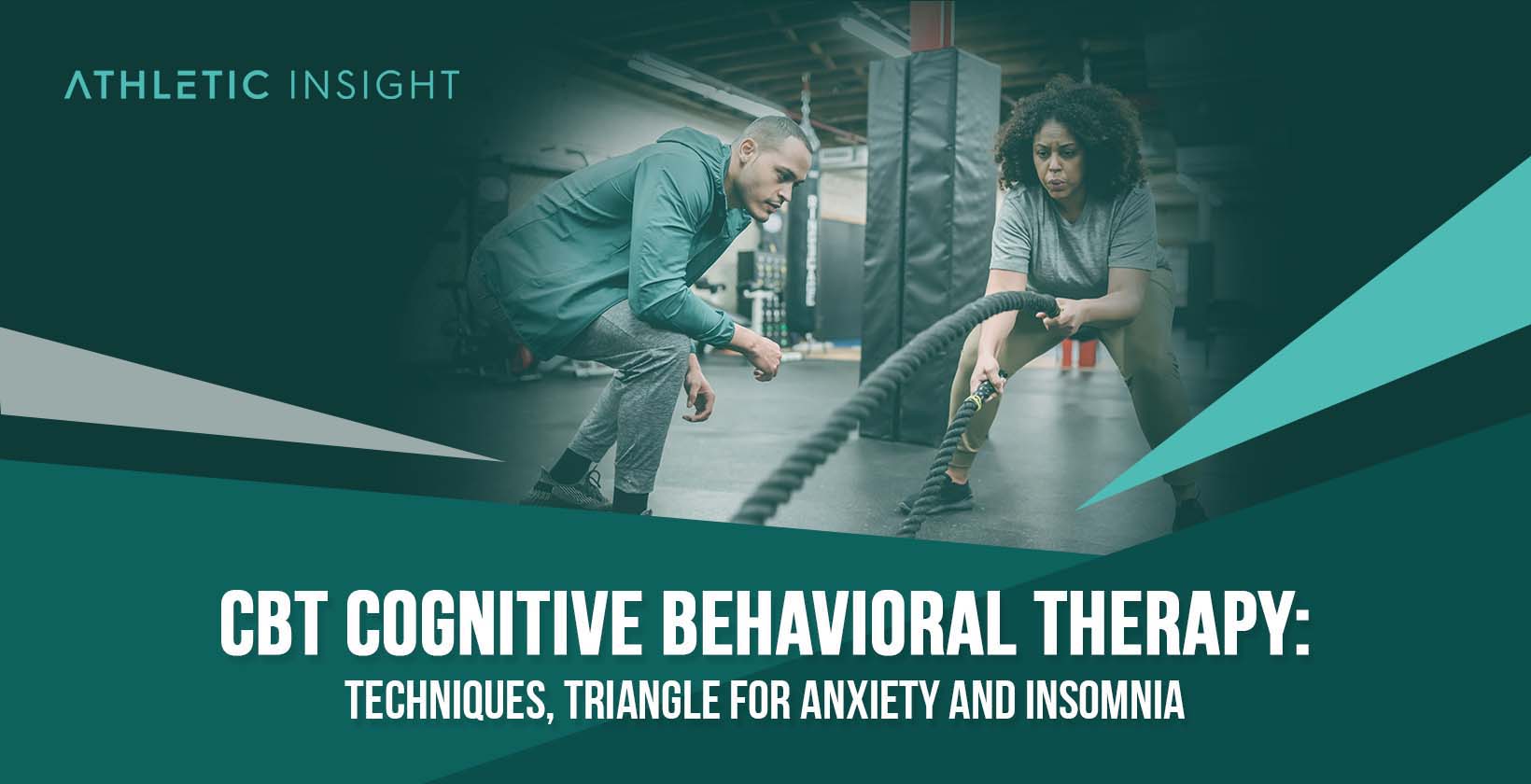Cognitive behavioral therapy (CBT) is a type of psychotherapy aimed at changing cognitive and behavioral patterns for people with depression, anxiety, drug and alcohol disorders, eating disorders, marital problems, and other mental illnesses.
Typically, CBT takes a problem-solving, goal-oriented approach to help people identify challenges, find solutions, and reach their desired end goal. In addition, CBT aims to identify, understand, and change unhealthy thoughts, behavior, and patterns.
While CBT is empirically supported, some criticisms of traditional CBT mention that it requires an enormous amount of work from the patient. This is because problem-solving strategies only work if the patient actively implements the techniques daily.
Traditional CBT also identifies negative thoughts and patterns as the problem, which many criticize since the treatment fails to provide room to accept them.
For specific mental health disorders, like phobias and generalized anxiety disorder, research by Ruhmland M. and J. Margraf found that cognitive behavioral therapy cbt techniques were highly efficient in treating generalized anxiety disorder.
What Are The Types Of Cognitive Behavioral Therapy?
There are four main types of Cognitive Behavioral Therapy’s; Cognitive Therapy (CT), Acceptance and Commitment Therapy (ACT), Dialectical Behavior Therapy (DBT), Trauma-focused cognitive behavioral therapy (TF-CBT).

- Cognitive Therapy (CT): Cognitive Therapy (CT) is the first variation of CBT, invented by psychiatrist Aaron Beck, relating to changing an individual’s dysfunctional cognitive thinking.
- Acceptance and Commitment Therapy (ACT): Acceptance and Commitment Therapy (ACT) encourages people to accept their dysfunctional thinking and feelings instead of CBT to modify and eliminate unhealthy thoughts and patterns.
- Dialectical Behavior Therapy (DBT): Dialectical Behavior Therapy (DBT) is unique to traditional CBT but similar to ACT’s philosophy of balancing acceptance and changing dysfunctional thinking and behavior. However, DBT uses mindfulness techniques to help individuals focus on the present.
- Trauma-focused cognitive behavioral therapy (TF-CBT): Trauma-focused cognitive behavioral therapy (TF-CBT) incorporates family-focused, gentle techniques for children and adolescents affected by trauma. TF-CBT helps improve children’s emotional problems that stem from traumatic events.
What Are The Principles of CBT?
According to the American Psychological Association (APA), here are the three principles of cognitive-behavioral therapy (CBT).
- Part of psychological disorders are caused by unsound or unhelpful thinking
- Part of psychological disorders are caused by habitual patterns or unhelpful behavior
- Relieve symptoms of psychological disorder through effective problem-solving processes to promote a better quality of life
What Are The Benefits Of CBT?
Cognitive Behavioral Therapy (CBT) is a form of psychotherapy that has been extensively researched and is considered effective for a wide range of psychological issues. The benefits of CBT are numerous, and here are some of the key ones.

- Effectiveness for a Range of Conditions: CBT has been shown to be effective for various mental health conditions, including depression, anxiety disorders, phobias, PTSD, OCD, panic attacks, and eating disorders. It is also used to help manage chronic pain, insomnia, and symptoms of serious illnesses such as cancer.
- Evidence-Based: CBT is supported by substantial research evidence showing its effectiveness. It’s one of the most studied types of therapy, and many clinical guidelines recommend it as the first-line treatment for several mental health conditions.
- Skills for Life: CBT equips individuals with practical skills to manage current problems and to prevent future relapses. These skills include identifying and challenging negative thought patterns, coping strategies, problem-solving skills, and ways to manage emotions.
- Short-Term Treatment: Compared to other therapy forms, CBT is usually more focused and short-term. Many people experience significant benefits within 5 to 20 sessions. This makes it a time-efficient and cost-effective treatment option.
- Structured Approach: CBT follows a structured approach, allowing therapists and clients to focus on specific problems and goals. This structure can make therapy more productive and enables clear tracking of progress over time.
- Empowers the Individual: CBT emphasizes collaboration between the therapist and the client. Clients actively participate in their recovery, which empowers them and increases their sense of control over their lives.
- Adaptable and Diverse: CBT techniques can be adapted for individual, group, couple, or family therapy settings. It’s also culturally adaptable and has been effectively used across different age groups and cultural backgrounds.
- Reduced Relapse Rates: By teaching individuals how to change their thinking patterns and behaviors, CBT can help reduce the likelihood of future mental health issues or relapses after treatment ends.
- Compatibility with Other Treatments: CBT can be used alongside medication and other therapies. It complements medication particularly well for conditions like depression and anxiety, enhancing overall treatment effectiveness.
- Focus on Present: While CBT acknowledges the impact of past experiences, it focuses primarily on current challenges and ways to improve the individual’s state of mind in the present. This present-focused approach can be particularly helpful for those who wish to achieve immediate coping improvements.
CBT is not a one-size-fits-all solution and may not be suitable for everyone. However, its wide range of applications, evidence base, and focus on developing practical coping strategies make it a valuable option for many people looking to improve their mental health.
How To Use Cognitive Behavioral Therapy For Anxiety?
Cognitive-behavioral therapy is the favored choice in treating generalized anxiety. Unlike severe anxiety, generalized anxiety includes the following symptoms occurring for at least six months; unmanageable worrying, restlessness, fatigue, difficulty concentrating, irritability, muscle tension and sleep disturbance.
Treating social anxiety with CBT can help relieve symptoms immediately. CBT also has long-term benefits through exposure, restructuring, and social skills training for social anxiety. The following are the general CBT-based techniques to treat generalized anxiety.
- Identifying triggers
- Exposure therapy stimulates situations or real-world situations that cause emotionally triggering thinking and responses. Includes imagining things, situations, and emotionally unhelpful people
- Modifying thoughts causing anxiety with verbal modifications from a therapist to change a patient’s beliefs
- Applied relaxation helps individuals enter a relaxed state in real-life anxiety triggering situations
How To Use Cognitive Behavioral Therapy For Insomnia?
Using cognitive-behavioral therapy (CBT) for individuals experiencing insomnia works to help patients modify or eliminate negative thoughts that cause difficulty sleeping. The following are common CBT techniques.
- Conditioning a patient’s mind to consider their bed for one purpose – conditions the mind and body to associate the object with sleep
- Applied relaxation – teach a patient to calm their mind and body
- Modifying and eliminating worries through exercises – help individuals recognize unhelpful thoughts that keep them awake
- Medications for immediate relief
Does CBD Help For Performance Anxiety?
Yes, CBD can provide immediate relief for individuals experiencing performance anxiety. For example, according to the NCBI, patients with generalized social anxiety saw a significant reduction in their symptoms with one dose of CBD. In addition, CBD helped relieve anxiety symptoms, like cognitive impairment, and lessening the fear of public speaking.
What Are The Risks Of The CBT?
If an individual is experiencing dysfunctional thoughts and behaviors, then cognitive behavioral therapy may help them identify and solve these issues. However, the main risk of CBT is feeling uncomfortable during a therapy session since it requires patients to talk about their unhealthy thoughts and patterns.
What Are The Steps Of CBT?
The first step of cognitive behavioral therapy is finding a therapist with which patients can establish a positive, collaborative relationship. Once a therapist is found, there are five steps of CBT; initial assessment, identifying problems, defining goals, awareness, treating problems.
- Initial Assessment: The beginning of CBT involves therapists taking an active role by outlining principles and sharing information with the patient about this type of psychotherapy. During this stage, the patient works to identify their problems with guidance from the therapist. The goal of the assessment is for therapists to determine a patient’s core beliefs that lead them to their maladaptive and instinctual thoughts.
- Identifying Problems: The patient and the therapist work together to identify the primary problem.
- Define Goals: After identifying the problem, with guidance from the therapist, the patient sets goals, and the therapist should outline concrete factors based on the observation that indicate improvement.
- Awareness: The therapist guides the patient to become aware of the reasons for their problems. The main benefit of cognitive behavioral therapy is to change the way a person perceives and reacts to emotionally triggering situations. A therapist will often have the patient identify their maladaptive and instinctual thoughts by observing the evidence behind these thoughts. Maladaptive thoughts are assumptions individuals have about themselves and the world with no concrete evidence behind these assumptions – they are irrational. While instinctual thoughts are also irrational, they usually occur in specific situations where an individual feels threatened.
- Treating Problems: Once patients identify the reasons for their thinking, assumptions, and patterns, the therapist encourages them to eliminate and modify these problems. This happens through different approaches that vary depending on the patient’s goals and needs. Typically, CBT involves the therapist giving the patient homework to work towards their goals in real-life.
What Is The Length of CBT?
Cognitive-behavioral therapy is a short-term therapy, with the length of CBT typically ranging from 10-20 sessions. Patients accomplish the first four steps within the first couple of sessions of CBT.
For some, CBT provides patients relief after a few sessions, while others need several sessions to meet their goals. The length of CBT depends on a couple of factors.
- The severity of the patient’s mental illness
- The personality of the patient
- Level of support
What Is The Confidentiality Level Of Cognitive Behavioral Therapy?
Therapists understand how important confidentiality is in therapy, so the level of confidence in cognitive behavioral therapy (CBT) is firm. In addition, federal privacy laws under HIPAA entail the minimum level of confidentiality that therapists and psychologists have to follow.
Specific exceptions are when medical professionals can disclose a patient’s personal information.
- If a patient informs them of their plan to commit suicide or induce harm to another
- Ongoing domestic abuse and negligence of children, elderly, and people with disabilities
- If a patient’s mental health is in question during legal proceedings
How To Prepare Yourself For Cognitive Behavioral Therapy?
While there is no one way to prepare for cognitive behavioral therapy, here are some ways to get the most out of the first session.

- Reserve some time to think about what you want out of CBT
- Write down fears, questions, and concerns about the CBT process
- Think about situations that typically cause you to react or think about recent problems that made you feel a certain way, and write them down
What Are The Factors For Cognitive Behavioral Therapy Success?
There are three factors that dictate the success of Cognitive Behavioral Therapy; openness, willingness to participate and share, making time to practice outside of sessions.
- Openness
- Willingness to participate and share
- Make time to practice outside of sessions
What Are The CBT Techniques?
Cognitive-behavioral therapy (cbt) techniques include the following strategies.
- The goal-oriented, problem-solving approach
- Collaboration through the engagement of patient and therapist
- Identifying, evaluating, and modifying irrational thoughts through adaptive thinking
- Behavioral experiments to observe, test, and correct distortions
- Other techniques depend on the patient. For example, a common method for people with an aversion to blood and needles is applied tension (when someone tenses their muscles in exposure situations)
Who Invented Cognitive Behavioral Therapy?
Psychiatrist Aaron Beck invented cognitive behavioral therapy (CBT) in 1976. Specifically, Beck’s version of therapy was called cognitive therapy. According to the NCBI, Beck formed this new type of therapy, leading to its empirical support and overall support, by exploring the possibility of changing a patient’s unhelpful cognitions.
What Is The Relationship Between Cognitive Behavioral Therapy And Cognitive Triangle?
The cognitive in CBT cognitive behavioral therapy suggests that this psychological treatment stresses changing an individual’s thought processes. The cognitive triangle outlines these processes by explaining people’s thoughts of an event as a repetitive process of thinking, feeling, and doing.
The cognitive triangle helps explain how dysfunctional thinking leads to unhealthy behaviors through repeated unhelpful thoughts that lead to irrational feelings and, ultimately, lead to negative actions.
These unhealthy patterns and thoughts are when the role of effective CBT treatment comes in. CBT helps individuals understand their maladaptive and automatic thoughts and perceive situations rationally with the cognitive triangle. Moreover, the cognitive triangle helps to slow a patient’s thought process through introspective questioning.
How Can Exercise Complement CBT Techniques for Anxiety and Insomnia?
Exercise is a potent adjunct to Cognitive Behavioral Therapy (CBT) for managing anxiety and insomnia. Regular physical activity increases the production of endorphins, the body’s natural mood elevators, contributing to reduced anxiety levels and promoting a sense of well-being.
Exercise also helps regulate the body’s sleep-wake cycle, enhancing the efficacy of CBT techniques for insomnia. The Aerobic exercises, such as running, swimming, or cycling, performed for 20-30 minutes most days of the week, are particularly effective. They not only improve sleep quality but also reduce stress and anxiety symptoms, creating a positive feedback loop that enhances the overall effectiveness of CBT interventions.
What Dietary Adjustments Can Support CBT Outcomes for Anxiety and Insomnia?
Dietary adjustments can significantly bolster the effectiveness of Cognitive Behavioral Therapy (CBT) for anxiety and insomnia. Incorporating foods rich in omega-3 fatty acids, such as salmon, walnuts, and flaxseeds, can reduce symptoms of anxiety. Magnesium-rich foods like leafy greens, nuts, and whole grains help in muscle relaxation and stress reduction, supporting sleep.
Avoiding caffeine and sugar, especially in the hours leading up to bedtime, can prevent spikes in energy and mood that disrupt sleep. A balanced intake of complex carbohydrates, lean proteins, and healthy fats throughout the day stabilizes blood sugar levels, moderating mood swings and improving sleep patterns, thereby complementing CBT techniques for managing anxiety and insomnia.
What are the Supplements That Enhance CBT Techniques for Anxiety and Insomnia?
Certain supplements can enhance the effectiveness of Cognitive Behavioral Therapy (CBT) for anxiety and insomnia.
- Magnesium: Magnesium supplements plays a role in reducing muscle tension and promoting relaxation, which can aid sleep.
- Omega-3 Fatty Acids: Omega-3 fatty acids have been linked to reduced anxiety levels.
- Melatonin: Melatonin supplements can be effective for insomnia, helping to regulate the body’s sleep-wake cycle.
- L-theanine: L-theanine, found in green tea, may improve sleep quality and reduce stress without sedation.
It’s important to approach supplementation under medical guidance to ensure compatibility with individual health conditions and other treatments. These supplements can serve as complementary interventions to CBT, potentially leading to improved outcomes in the treatment of anxiety and insomnia.
How Does Integrating Mindfulness with CBT Benefit from Nutrition and Exercise?
Integrating mindfulness with Cognitive Behavioral Therapy (CBT) and supporting it with proper nutrition and exercise can significantly enhance mental health outcomes. Mindfulness practices improve stress resilience and emotional regulation, synergizing with CBT’s focus on changing negative thought patterns.
Nutritionally, a diet high in antioxidants, vitamins, and minerals from fruits, vegetables, and whole grains can support brain health and mood regulation. Exercise, by reducing symptoms of anxiety and depression, further enhances mindfulness and CBT outcomes by improving neuroplasticity and stress resilience. This holistic approach, combining mindfulness, nutrition, and physical activity with CBT, can lead to more substantial and lasting improvements in anxiety, insomnia, and overall well-being.
What Does a Holistic CBT Routine Incorporating Diet, Exercise, and Supplements Look Like?
A holistic CBT routine that incorporates diet, exercise, and supplements would begin with structured CBT sessions focusing on identifying and modifying negative thought patterns and behaviors. Complementing these sessions, a tailored exercise regimen including aerobic and strength training exercises would be integrated, aiming for at least 150 minutes of moderate activity per week to reduce anxiety and improve sleep quality.
The dietary plan would emphasize whole foods, rich in omega-3 fatty acids, magnesium, and vitamins, while minimizing caffeine and sugar intake to support mood stabilization and sleep. Supplements such as magnesium, omega-3 fatty acids, and melatonin could be introduced, under medical supervision, to address specific deficiencies or enhance treatment outcomes. This comprehensive approach ensures that both the psychological and physiological aspects of anxiety and insomnia are addressed, maximizing the effectiveness of CBT.



